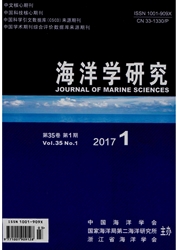

 中文摘要:
中文摘要:
以宁波市鄞州区街道/镇为分析单元,采用探索性空间分析、Ripley’s K函数法和核密度估计法对该区2005年和2011年的人口、GDP、三次产业产值指标进行了时空分析。结果表明:(1)鄞州区各街道/镇的产业转换速度呈两翼快中间慢的趋势,紧邻城区和两翼的转换速度快于中间过渡地带。(2)区内各街道/镇的产业发展空间差异显著,第一产业呈非集聚分布;第二产业环绕在老城区的U型集聚带和沿海的工业集聚带;第三产业集聚最显著,但规模较小。(3)鄞州区整体产业差异显著,人口、GDP 和第一产业集聚分别为第二、三产业的集聚提供了劳动力、集聚空间和资本。
 英文摘要:
英文摘要:
The industrial economy’s spatial distribution, pattern, scale and correlation with surroundings contribute to optimization of its spatial layout and coordination of the balanced development. In this paper the streets in the town of Yinzhou District in Ningbo City are taken as a unit to analyze the spatiotemporal change using complementarily the methods of Exploratory Spatial Data Analysis, Ripley’sK Function, and Kernel Density Estimation. What is more, it treats population, GDP, the first industry, the second industry, and the third industry in 2005 and 2011 as five indexes. The results show that: (1) Streets and towns of high industrial conversion speed are mainly located in both ends of Yinzhou District, whereas the streets/towns of low speed lie in-between. Moreover, the industrial conversion speed of streets and towns which are close to the urban areas and at the wings of Yinzhou District is faster than that in the intermediate transition zone. (2) There is a significant spatial difference in industrial economy development. First, the first industry is not concentratedly distributed and the third industry aggregates apparently at the small scale. In contrast, the second industry comes into being with two agglomeration zones of U-type areas surrounding old city and coastal industrial areas. (3) The overall difference of industrial economy is significant in five indices, and the agglomeration of population, GDP as well as the first industry can provide the labor, space and capital for the second and third industry.
 同期刊论文项目
同期刊论文项目
 同项目期刊论文
同项目期刊论文
 期刊信息
期刊信息
